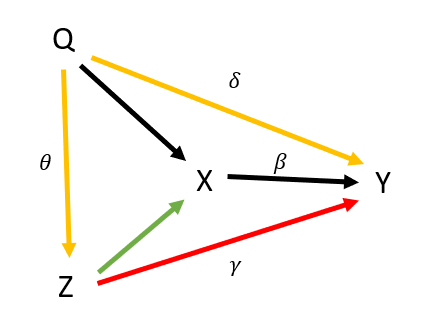I typically see people refer to exclusion restriction as the underlying assumption needed for causal interpretation of IV. But are there actually two assumptions needed?
say we have $y_{i,t} = \beta x_{i,t} + \epsilon_{i,t}$
and $z_{i,t}$ is the instrument. Don't we need:
1) The instrument has to be un-correlated with any other unobserved determinant of $Y,$ and 2) It has to affect $Y$ only by changing $X.$
Isn't only the latter the exclusion restriction? And without that, if the first is satisfied, the reduced form/intent to treat (ITT) should still be causal, correct? The second just allows you to interpret it as the effect of $X?$
Does $\operatorname{Cov}(z,\epsilon)=0$ incorporate both above?
With an example I have seen, people use the surprise death of a highly productive worker to calculate the effect of losing a highly productive collaborator on others' productivity. In this case, if the death was a surprise, surely 1 is satisfied. But, if the death causes mental health problems for the collaborators which then affect their productivity, would this then mean the exclusion restriction failed, but the instrument is still un-confounded, and therefore the reduced from/ITT is still causal?


